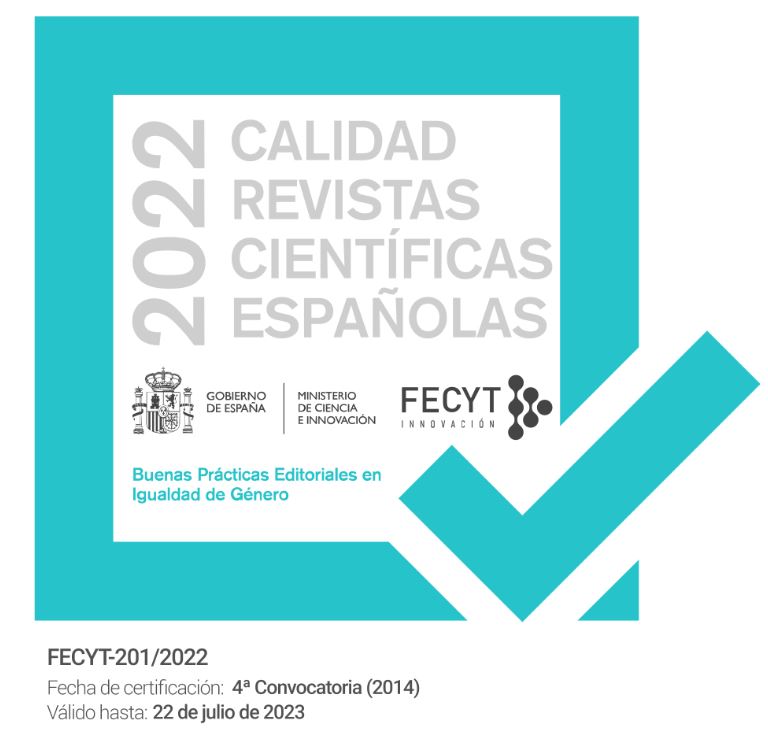Las analíticas webs como elemento de apoyo al análisis de sitios web educativos
DOI:
https://doi.org/10.30827/eticanet.v13i2.11990Abstract
El desarrollo de Internet ha traído de la mano la creación de diversas herramientas que facilitan conocer el crecimiento de los diferentes entornos tales como páginas Web, redes sociales, wikis, etc., estas se han denominado analíticas web. En las páginas que presentamos a continuación describimos los resultados obtenidos tras el análisis del repositorio de objetos de aprendizaje creados dentro de la red social para profesores universitarios DIPRO 2.0. Por medio de Google Analytics y de OneStat se ha estudiado la viabilidad de este recurso reportando información relevante en lo que se refiere a la toma de decisiones sobre viabilidad del espacio web diseñado, en concreto aporta información sobre si se reciben visitas de las mismas, los sitios que son fundamentalmente visitados, los navegadores utilizados o los dispositivos empelados para las visitas. En el caso que presentamos ha sido valiosa para hacer más visible tanto la red social como el repositorio de objetos de aprendizaje que alberga estaDownloads
References
Acera, M.A. (2012). Analítica Web. Madrid: Anaya Multimedia.
Clifton, B. (2012). Advanced web metric with Google analytics. Indianapolis: John Wiley & Sons.
Cutroni, J. (2010). Google Analytics. SauPaulo: Novatec.
Grout, I. y A'ain, A. (2012). Adapting an on-line tutorial tool with web analytic to incorporate analysis of tutorial use. International Conference on Interactive Collaborative learning (ICL). Consulta el 25 febrero 2013, http://www.deepdyve.com/lp/institute-of-electrical-and-electronics-engineers/adapting-an-on-line-tutorial-tool-with-web-analytics-to-incorporate-LQHusefJKk?articleList=%2Fsearch-related%3Fto%3Db4x1L0Q9XQ%26dateFacetFrom%3DNOW%252FDAY-5YEARS%26page%3D4.
Fritz, J. (2011). Classroom walls that talk: Using online course activity data of successful students to raise self-awareness of underperforming peers. In Internet and Higher Education, Vol. 14, pp. 89–97.
Ledford, J., Teiseria, J. y Tyler, M. E. (2011). Google Analytic. Madrid: Anaya Multimedia.
Liaqat, A., Marek, H.,Dragan G. y Jelena J (2012). A qualitative evaluation of evolution of a learning analytics tool. In Computers & Education, Vol. 58, pp. 470–489.
Liaqat, A., Mohsen A., Dragan G., Jelena J y Marek H. (2013). Factors influencing beliefs for adoption of a learning analytics tool: An empirical study. In Computers & Education, Vol. 62, pp. 130–148
Maldonado, S. (2010). Analítica web. Medir para triunfar. Madrid: ESIC.
Mödritsche, F., Neumann, G. y Brauer, C.(2012). Comparing LMS usage behavior of mobile and web users. 2012 12th IEEE International Conference on Advanced Learning Technologies. Consulta el 26 abril 2013, http://0-ieeexplore.ieee.org.fama.us.es/stamp/stamp.jsp?tp=&arnumber=6268200.
Morales, M. (2010). Analítica web para empresas: arte, ingenio y anticipación. Barcelona: UOC.
Newhouse, C. P. y Joseph N. N. (2009): Using digital technologies and contemporary psychometrics in the assessment of performance on complex practical tasks. In Technology, Pedagogy and Education, Vol. 18, 2, pp. 221-234.
Phippen, A.D. (2004). An evaluative methodology for virtual communities using web analytics. In Campus-Wide Information Systems, Vol. 21, 5, pp. 179-184.
Piñeiro, J. (2012). Usos infantiles de Internet: perspectivas y prospectivas. Vigo. Facultad de Ciencias Sociales y de la Comunicación, tesis doctoral inédita.
Rodríguez-Burrel, J. (2009). Google analytics: bueno, bonito y gratis. En El Profesional de la Información, Vol. 18, 1, pp. 67-71.
Vivekananthamoorthy, N., S. Sankar y Sharmila, S: (2009). An effective E-learning framework model-a case study. 7tH International Conference on Digital. Consulta el 24 abril 2013, http://0-ieeexplore.ieee.org.fama.us.es/stamp/stamp.jsp?tp=&arnumber=5397326
Published
Issue
Section
License
The authors who publish in this journal agree to the following terms: The authors retain the copyright and grant the journal the right to be the first publication of the work as well as licensed under a Creative Commons Attribution License that allows others to share the work with an acknowledgment of the authorship of the work and the initial publication in this magazine. Authors are allowed and encouraged to disseminate their work electronically (for example, in institutional repositories or on their own website) before and during the submission process, as it may lead to productive exchanges as well as further citation. Earliest and greatest of published works (See The Effect of Open Access).













